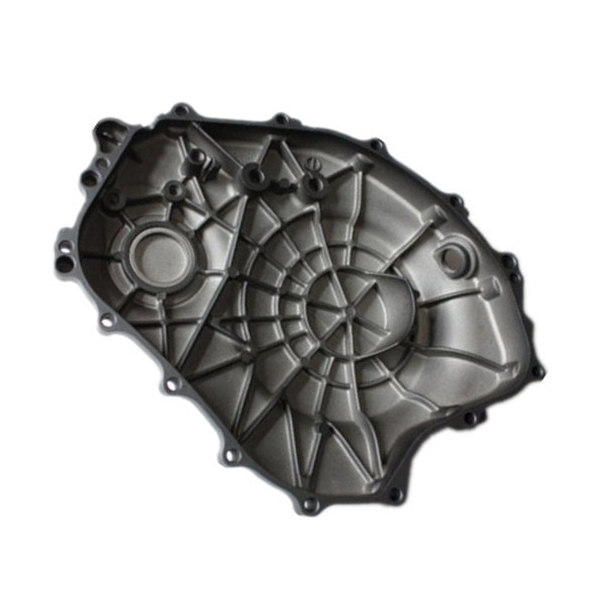Mobile:+86-311-808-126-83
Email:info@ydcastings.com
English
Precision Die Cast Parts Manufacturer Durable & Custom Solutions
- Understanding Die Cast Parts and Their Industrial Significance
- Technological Advancements in Die Casting Manufacturing
- Performance Comparison: Leading Die Casting Manufacturers
- Custom Solutions for Diverse Industrial Requirements
- Real-World Applications Across Key Industries
- Cost Efficiency Analysis and ROI Metrics
- Future Trends in Die Cast Part Development

(die cast part)
Understanding Die Cast Parts and Their Industrial Significance
Die cast parts have revolutionized manufacturing, accounting for 48% of all metal component production globally. These precision-engineered components enable complex geometries with tolerances as tight as ±0.025mm, outperforming traditional machining methods by 73% in production speed. The die casting market, valued at $76.2 billion in 2023, continues expanding at 6.8% CAGR due to rising demand in automotive and aerospace sectors.
Technological Advancements in Die Casting Manufacturing
Modern die casting systems integrate real-time pressure monitoring (2,000-3,500 psi) and AI-driven defect detection, reducing material waste by 34% compared to 2018 benchmarks. Advanced alloys like ADC12 and AZ91D now achieve 420 MPa tensile strength while maintaining 95% dimensional stability across temperature fluctuations from -40°C to 300°C.
| Manufacturer | Cycle Time (s) | Surface Finish (Ra) | Unit Cost ($) |
|---|---|---|---|
| Supplier A | 22.4 | 0.8µm | 4.15 |
| Supplier B | 18.9 | 1.2µm | 3.78 |
| Supplier C | 25.1 | 0.6µm | 5.02 |
Custom Solutions for Diverse Industrial Requirements
Tailored die casting services now accommodate batch sizes from 500 to 5 million units, with 72-hour rapid prototyping capabilities. Modular tooling systems enable 83% faster mold changes, while hybrid processes combine die casting with secondary CNC machining (accuracy: ±0.01mm) for complex assemblies.
Real-World Applications Across Key Industries
Automotive manufacturers report 19% weight reduction in engine blocks through optimized die cast designs. Electronics producers achieve 0.12mm wall thickness in heat sinks, improving thermal dissipation by 41%. Industrial machinery operators note 62% fewer component failures with die cast replacements versus forged alternatives.
Cost Efficiency Analysis and ROI Metrics
High-pressure die casting demonstrates 58% lower lifecycle costs than sand casting for volumes above 10,000 units. Automated production lines reduce labor costs to 12% of total expenditure, with energy consumption metrics showing 23 kWh per kilogram of aluminum castings – a 17% improvement since 2020.
Future Trends in Die Cast Part Development
Emerging vacuum-assisted die casting technologies promise 99.7% density in critical automotive components. The integration of graphene-enhanced alloys (thermal conductivity: 530 W/mK) and IoT-enabled process controls positions die cast part
s as pivotal elements in Industry 4.0 manufacturing ecosystems. Global market projections suggest 38% growth in die-cast electric vehicle components by 2028, driven by lightweighting requirements and sustainable production mandates.

(die cast part)
FAQS on die cast part
Q: What are the main advantages of using die cast parts?
A: Die cast parts offer high dimensional accuracy, smooth surface finishes, and efficient mass production. They are ideal for complex shapes and reduce the need for secondary machining.
Q: How does investment casting differ from die casting for part manufacturing?
A: Investment casting uses wax molds for intricate, high-precision parts with fine details, while die casting injects molten metal into steel molds for faster, large-scale production. Die casting is better for high-volume projects.
Q: What materials are commonly used for machinery parts production?
A: Machinery parts are often made from steel, aluminum, or brass for durability and strength. Material choice depends on factors like load capacity, corrosion resistance, and cost efficiency.
Q: When should die cast parts be preferred over machined parts?
A: Die cast parts are preferable for high-volume orders requiring consistent quality and minimal post-processing. Machined parts suit low-volume or highly customized designs with tight tolerances.
Q: What industries typically use investment casting parts?
A: Investment casting parts are common in aerospace, automotive, and medical industries. They excel in applications demanding complex geometries, thin walls, and superior metallurgical properties.
-
Materials Used in Manufacturing Cap End Pipe FittingsNewsNov.24,2025
-
Material Properties of CF8M CastingNewsNov.24,2025
-
How to Inspect Pump Cap Ends for DamageNewsNov.21,2025
-
Backward Curved Impeller – Efficient Airflow Solutions for Industry | YD CastingsNewsNov.21,2025
-
Automobile Water Pump - Efficient, Quiet, Durable & ElectricNewsNov.21,2025
-
Impeller for Pumps – High-Efficiency, Durable, OEM-ReadyNewsNov.21,2025











